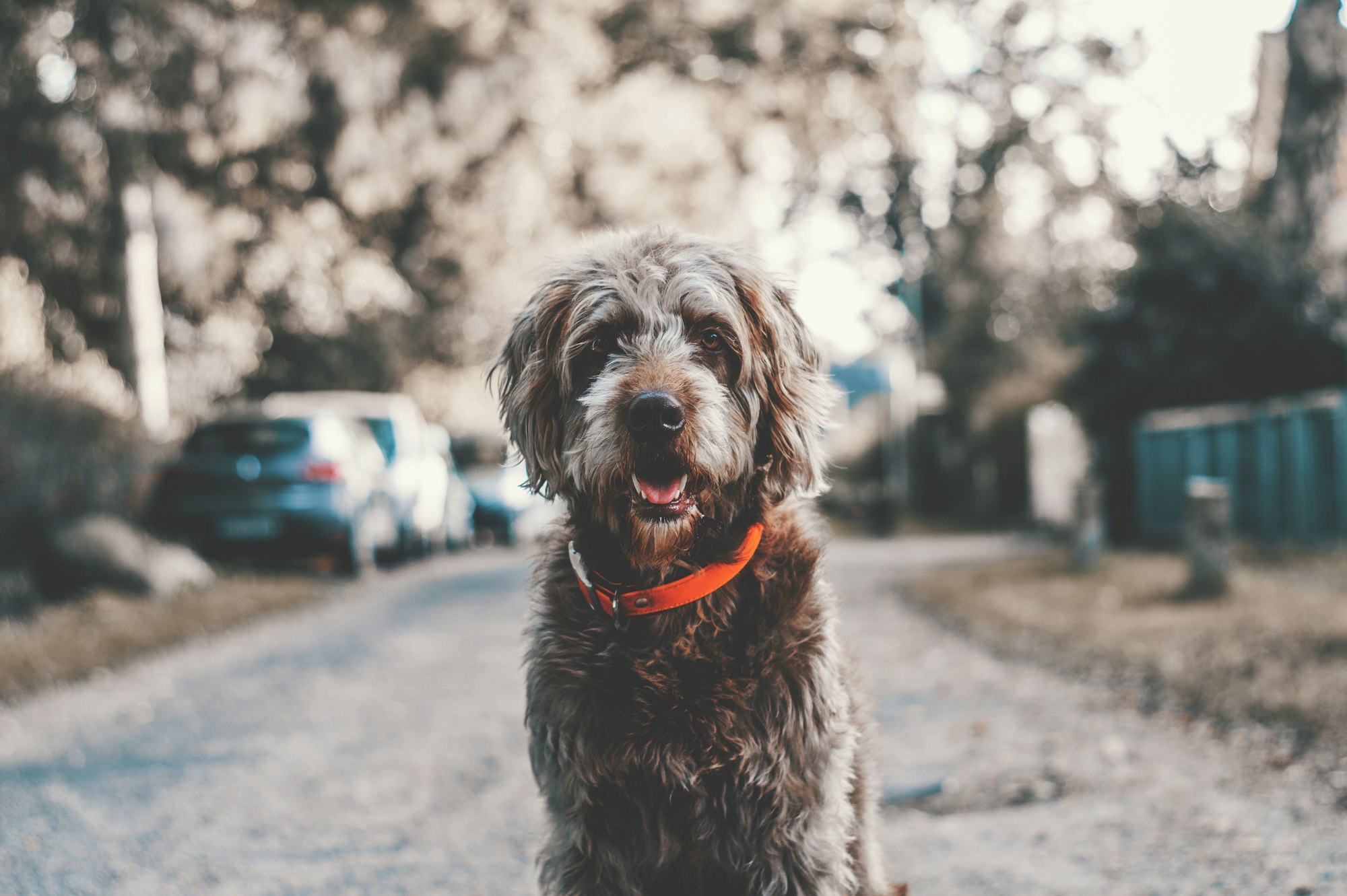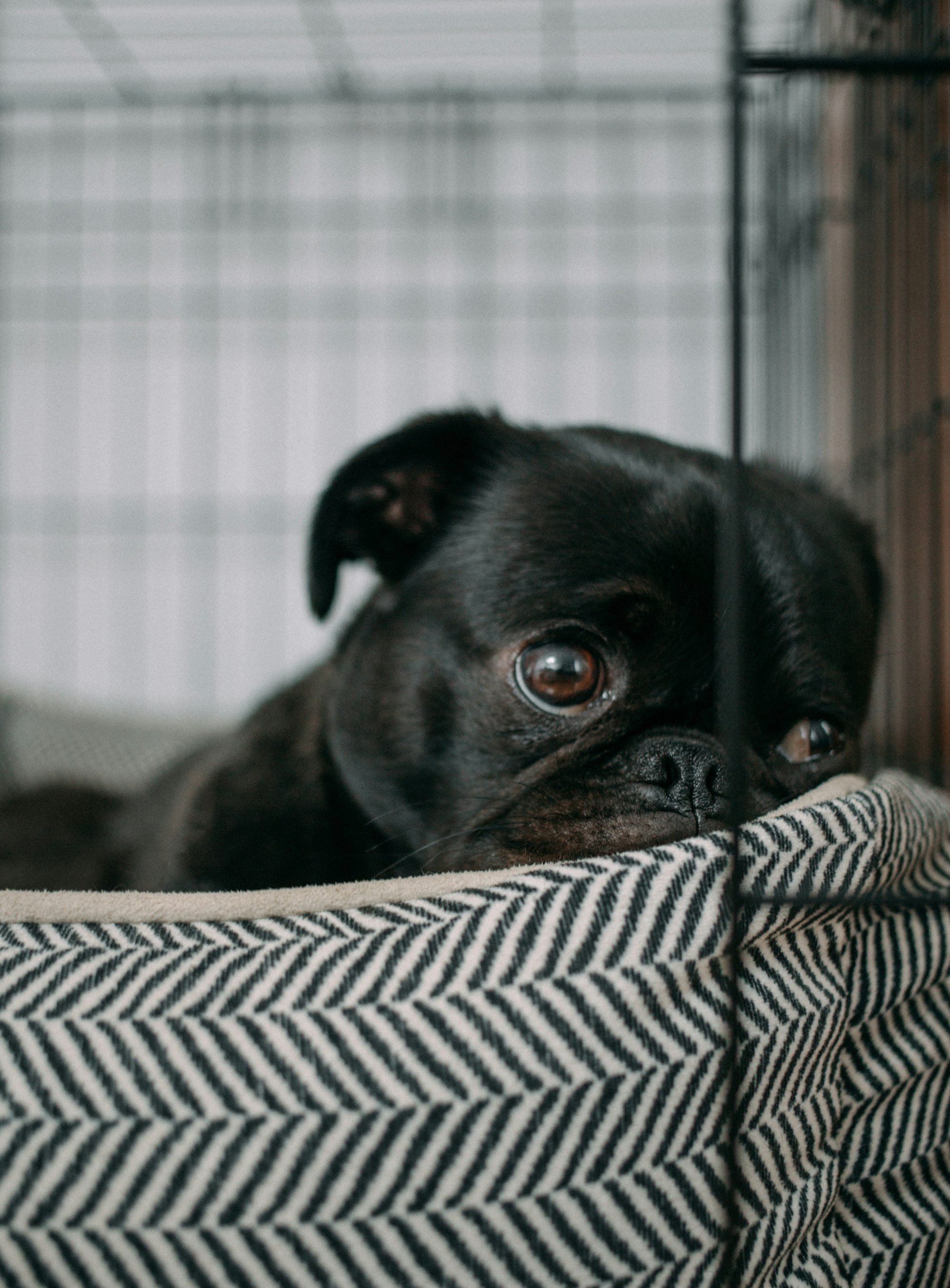It's a story many of us know all too well. You love dogs and dream of having one by your side. But there's a problem - you have a full-time job, commitments, and a busy life. The thought of leaving your furry friend alone at home for hours breaks your heart. Well, what if I told you there are dog breeds designed for your lifestyle? Breeds that thrive even when they spend some time alone. Let's dive in and discover the best dog breeds that can be left alone.

Why Some Dogs Handle Solitude Better
Before we start listing breeds, let's understand why some dogs manage alone-time better. Dogs, like humans, have unique personalities. While some enjoy their alone time, just like that one friend who loves solo vacations, others need constant company. This trait is often bred into them over generations, based on the jobs they were designed to do.
For example, hunting dogs, always in packs, naturally look for companionship. On the other hand, guarding breeds have been trained to stay alert and independent. It's these historical roles that play a big part in their present-day temperament.
Independent dog breeds: The Top Picks
Imagine a dog lying on a porch, watching the world go by, with no care in the world. That's your Basset Hound for you. Their laid-back nature makes them excellent companions for those who work long hours. Surprised? Most people associate Greyhounds with energy because of their racing background. But in a home setting? They're couch potatoes and love lounging around.
These little guys are adaptable and don't mind being alone. Just give them a comfortable spot, and they'll nap the day away until you return. The independent and aloof nature of Chow Chows makes them quite self-sufficient. Think of them as the cats of the dog world.
Dogs for the Apartment Dweller
Living in an apartment and worrying about space? Fear not. Many of the breeds that handle solitude well are also apartment-friendly.
Shiba Inu: These Japanese breeds are as independent as they come. They're content with a short walk and will happily spend the rest of the day indoors.
Boston Terrier: Small in size but big in heart, these dogs don't demand much space or attention, making them great for apartment living.
Training: The Key to a Happy Solo Dog
Even the most independent breeds need training to handle extended periods alone. It's essential to ensure they don't develop separation anxiety. Start by leaving them alone for short periods and gradually increase the duration. puzzles toys, and familiar scents can also make the experience less stressful.
Understand Your Dog’s Needs
We've spoken a lot about dogs that can stay alone, but let’s delve deeper into the human connection. Every dog, independent or not, craves human interaction. Remember that movie scene where the loyal dog waits by the window, tail wagging, as its owner comes home? It’s not just Hollywood; it’s a real emotion.
Factors Beyond Breed
While breed plays a role in a dog's independence, other factors contribute:
Age: Puppies and senior dogs typically require more care and attention than middle-aged canines.
Health: Dogs with medical conditions may need more frequent care or check-ins.
Past experiences: Rescued dogs or those with traumatic pasts might need more attention and assurance.
Ensuring Your Dog’s Happiness When Alone
Interactive Toys: Toys like puzzle feeders or toys that make them think can be a real treat. It's like leaving a Sudoku puzzle for your dog.
Safe Spaces: Create a cozy nook or corner, maybe with a piece of your clothing, so your scent keeps them comforted.
Music or TV: Some dogs find the background noise of a TV or soft music calming. There are even channels designed for dogs these days!
What if My Breed Isn't on the List?
Don't be disheartened if your beloved pooch's breed isn't listed above. With proper training and environment, most dogs can learn to handle alone time. It’s all about making them comfortable and ensuring they have activities to keep them engaged.
Considering a Companion
Another popular solution is getting a companion for your dog. It doesn't always have to be another dog; even a cat might do! This ensures they have someone to interact with, even in your absence.
Monitoring Your Dog
In today’s tech-savvy world, pet cams are a boon. Devices like these allow you to monitor your pet, talk to them, and even give treats remotely. It's comforting for both you and your furry friend.
Socializing: The Foundation of Independence
You might be wondering, "How does socializing relate to a dog's ability to be alone?" Surprisingly, a lot! Socialized dogs are generally more confident and less prone to anxiety.
Puppy Playdates: Just as we did in school, dogs benefit from interacting with their peers. It helps them learn essential social cues and build confidence.
Dog Parks: A well-socialized dog can enjoy and benefit from regular visits to dog parks, interacting with various breeds and personalities. This interaction can tire them out, making them more relaxed when they're home alone.
Nutrition: More Important Than You Think
Believe it or not, what your dog eats can impact how they handle being alone. A well-fed dog with a balanced diet is generally more content and less anxious.
Timed Feeders: If you're away during feeding times, consider automatic feeders. Not only do they ensure timely meals, but the anticipation of food can also be a distraction.
Hydration: Ensure your dog has access to fresh water throughout the day. Dehydration can lead to uneasiness.

Exercise: A Tired Dog is a Happy Dog
Physical activity plays a crucial role in a dog's overall temperament. An exercised dog is less likely to be anxious or destructive when left alone.
Morning Walks: A brisk walk or play session before you leave can tire your dog out, ensuring they rest for a good part of the day.
Interactive Play Mats: These mats challenge your dog physically and mentally, keeping them engaged for hours.
Seeking Professional Help
If you notice signs of severe separation anxiety in your dog, like excessive barking, destruction, or self-harm, it's essential to seek professional help.
Dog Trainers: They can offer specialized training techniques tailored to your dog's needs.
Behavioral Therapists: For severe cases, a canine behavioral therapist can provide strategies to help your dog cope better.
Community: Leverage Your Dog-Loving Neighbors
Sometimes, the solution is closer than you think. Join or form community pet-sitting groups where neighbors take turns checking on and spending time with dogs in the community. An excellent option for social dogs, these facilities provide a safe environment for play and interaction.
The Changing Landscape of Urban Dog Ownership
In the bustling cities and ever-evolving urban landscapes, owning a dog comes with its unique challenges. But understanding the adaptability of certain breeds can be a game-changer.
Balcony Breaks: For those living in high-rise apartments without easy access to gardens, training your dog to use the balcony for breaks, with appropriate cleaning measures, can be invaluable.
Indoor Exercise Regimens: While nothing can replace the joy of an open field, interactive toys, treadmills, and indoor obstacle courses can ensure your dog gets their daily dose of activity.
Safety First: Preparing Your Home
Leaving a dog alone isn’t just about their emotional well-being; their physical safety is paramount. Ensure potential hazards like wires, toxic plants, and small ingestible objects are out of reach. As mentioned earlier, pet cams are a boon. In addition to interaction, they allow you to monitor for potential risks or accidents.
The Emotional Quotient: Reading Your Dog
Beyond the wagging tails and playful barks, dogs communicate in subtle ways. Understanding these cues can help gauge their comfort with solitude. A relaxed posture, even breathing, and a calm demeanor typically indicate contentment. Restlessness, excessive panting, or pacing might signal anxiety. While occasional barking is natural, continuous or distressed sounds can be cause for concern.
Alternatives to Solitude: Modern Solutions
Technology and innovative services have brought forth solutions that weren’t available a decade ago.
Pet Walkers: Platforms connect dog owners with trusted walkers who can take your pup for a stroll in the middle of the day.
Virtual Playdates: Sounds futuristic? Some owners set up virtual playdates where dogs can "interact" with their furry friends through screens.

Beyond Dogs: Expanding the Pet Family
Sometimes, the answer to a lonely dog is another pet, and not necessarily another dog.
Cats: With the right introduction techniques, cats and dogs can coexist harmoniously, providing each other company.
Birds: You'd be surprised how many dogs find solace in the chirping of a bird. It’s a multisensory engagement – sound, movement, and interaction.
Busting Myths: The Truths About Solitude
There are countless myths surrounding dogs and their capacity for independence. Let's shed light on some common misconceptions.
All Small Dogs are Independent: Size doesn't necessarily equate to independence. While some small breeds are indeed self-reliant, others require constant companionship.
Independence Means Aloofness: Just because a breed can handle being alone doesn't mean they're distant or cold. Many independent breeds are quite affectionate when their owners are around.
Understanding Separation Anxiety
Separation anxiety is a term we often hear, but what does it truly mean for our pets? Destructive behavior, excessive barking, or even self-harm can be indicative. Consistent schedules, comforting toys, and sometimes even medications or therapies can help alleviate symptoms.
Stimulating the Mind: Beyond Physical Exercise
Engaging a dog's mind is as crucial as physical activity. A mentally stimulated dog is less likely to feel the hours roll by.
Training Sessions: Short, daily training sessions, teaching new tricks or reinforcing old ones, can be incredibly engaging.
Scent Games: Hide treats or toys and let your dog find them. It engages their primary sense and keeps them occupied.
A Future with Robots: AI and Pets
The advancement of technology has brought about intriguing interactions between pets and robots. Devices that roll, squeak, or move unpredictably, driven by AI, can keep pets engaged. Robots that dispense treats or kibble at timed intervals or when activated by the pet.
Decoding the Dog's Environment
Even within the confines of your home, the environment can have a profound impact on your dog's comfort levels when left alone.
Ambience Matters: Factors like lighting, room temperature, and ambient noise can either soothe or stress your pet. Ensuring a cozy atmosphere can make a world of difference.
Familiar Spaces: Dogs often have favorite spots where they feel safest. Whether it's a particular couch, bed, or sunny corner, identifying and enhancing these spaces can provide added comfort.
The Role of Senses in Solitude
Ever noticed your dog suddenly perking up, sniffing the air, or cocking their head at a seemingly inaudible sound? Their sensory world is rich and plays a role in their perception of time and solitude.
Leaving soft music or recordings of familiar voices can be incredibly calming for some dogs, making them feel less alone.
amiliar scents, such as an unwashed shirt or a used pillowcase, can be a source of comfort for many dogs. Their powerful noses pick up on these familiar scents, providing a semblance of company.
Adapting to Life Changes
As dog owners, our lives are bound to change. From relocating homes to growing families or changing jobs, our schedules and routines can shift. Even amidst changes, maintaining certain constants in your dog's routine can help them adapt more smoothly. If introducing new family members or pets, gradual introductions can make the process less daunting for your canine companion.
The Age Factor: Puppies vs. Seniors
While we've touched upon this briefly, it's crucial to understand the nuances between the needs of a puppy and a senior dog. Their world is all about exploration, learning, and bonding. Structured alone time, peppered with play and training, can set the foundation for a well-adjusted adult dog.
With age, they might become more set in their ways, needing more frequent bathroom breaks or battling health issues. Comfort, accessibility, and frequent check-ins become paramount.

Engaging with the Wider Community
Being a part of dog-owner communities, both online and offline, can offer invaluable insights, tips, and support. Sharing experiences, asking questions, and learning from others can provide fresh perspectives and solutions to common challenges. Participating in dog-centric events can not only be a fun outing but also a learning opportunity. From training workshops to canine carnivals, there's a world of engagement out there.
Conclusion:
In the world of canine companionship, understanding and meeting the needs of specific breeds and individual dog personalities are crucial. From recognizing breeds that handle solitude well to ensuring physical and mental stimulation, the key lies in a holistic approach. Age, health, environment, and the dog's sensory world play significant roles in shaping their comfort with solitude. Modern technology, community engagement, and consistent routines further enhance their well-being. Amidst changing urban landscapes, the essence remains: a bond forged on mutual understanding, respect, and love ensures our furry friends thrive, irrespective of the time they spend alone.
Frequently Asked Questions
- Which dog breeds are best suited for being left alone?
- Some breeds known for their independence include the Basset Hound, Greyhound, French Bulldog, and Chow Chow. However, individual temperament can vary, so it's essential to understand your dog's specific needs.
- How can I help my dog cope with separation anxiety?
- Strategies include establishing a consistent routine, providing interactive toys, using comforting scents, and gradually training them to be alone. Severe cases might benefit from professional training or therapy.
- Are there technologies available to monitor or interact with my dog while I'm away?
- Yes, pet cams are popular and allow owners to watch, speak to, and even treat their pets remotely. There are also automated toys driven by AI that can engage your pet.
- How often should I check on a dog left alone at home?
- While some breeds and individual dogs handle solitude well, no dog should be left alone for excessively long periods. Ideally, if you're gone for a full workday, having someone check midday is beneficial.
- Can introducing another pet help with my dog's loneliness?
- Often, a second pet can provide companionship. However, introductions should be gradual, and compatibility should be considered. Not all dogs will appreciate a new addition, so it's essential to gauge and respond to their reactions.
More breed articles:









